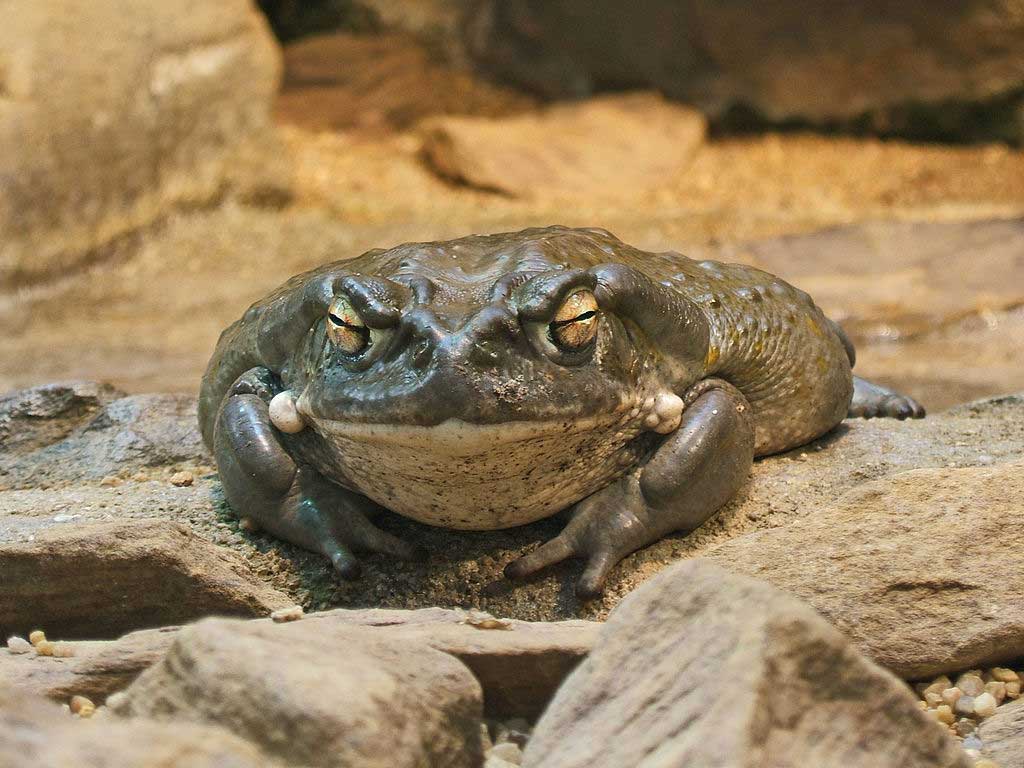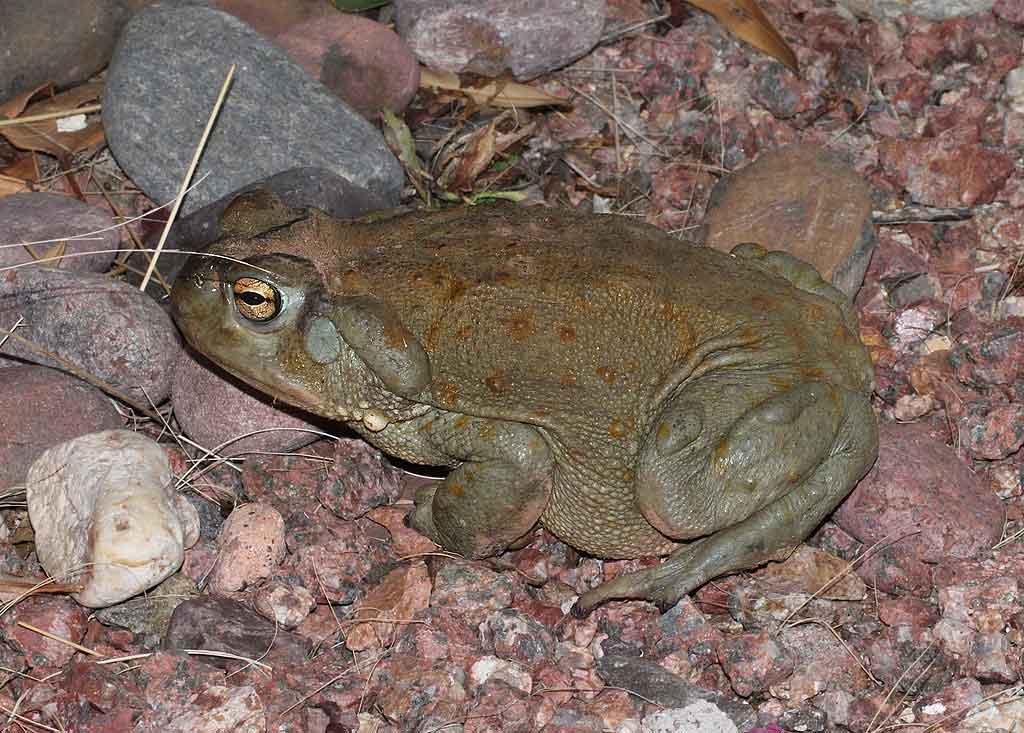
Content |
|---|
Habitat and way of life
Grasslands, semi-deserts and deserts from sea level to more than 1.600 m are the habitat of Colorado River toad, where they look for places with some humidity, like the cattle troughs. These toads they are mainly nocturnal.
Male calling behavior is stunted. The secretion of Sonoran Desert toad it is poisonous and has a hallucinogenic effect. The raccoons Capture animals safely by turning them on their backs, opening their bellies with their claws and eating only the entrails. In the dry season, toads burrow into the ground and protect themselves with a covering of skin mucus.
Mating takes place after the rains. The large females then lay up 8.000 eggs of 1,6 mm diameter in permanent or temporary ponds. Tadpoles feed on algae.
Physical characteristics
The Sonoran Desert toad has relatively soft and leathery skin. His pupils are transversely oval, the golden iris, large, kidney-shaped parotoid glands. Whitish warts at the corner of the mouth are characteristic of the species. Adult females reach 9-18 cm., sometimes almost 20 cm., and weigh 900 g. Males are considerably smaller, with 8-16 cm..
The toads of this species have been frequently imported in recent years to serve as drug substitutes for narcotic addicts.
The "Colorado River toad" in captivity

Behavior
During the day, the Colorado River Toad will use an abandoned rodent burrow, hide under or within rock crevices or dig into the substrate. Daytime temperatures should range between 24-26 degrees centigrade and let them drop to 13-18 degrees at night. It is in these cooler night temperatures that they emerge to feed.. Some people say UVB lighting is not essential, but the ideal is to provide it because we believe that they benefit from natural light.
Terrarium
The Colorado River toad it is a hardy species that can be maintained with a few simple steps. These toads they grow a lot, therefore adequate space must be provided, especially if several are kept together. We recommend a glass tank of at least 1,2 m, and make sure you have a secure lid, as they are strong and can easily slip away. If you use a glass terrarium, front-opening doors allow access for power and maintenance; the top has a mesh cap that allows lighting and heating to be placed on top.
The substrate must have a depth of 8 – 10 cm.. to allow natural excavation during daytime heat. A variety of substrate can be used, from coco, cypress mulch (zoo forest floor) and sands.
Diet
Although the Colorado River Toad it is known as a desert species, water is very important and must always be provided, as they naturally live near water and should never be allowed to become dehydrated. Fogging at night will encourage them to come out of their burrows to feed. They eat practically anything given to them, from live insects to thawed rodents. You must be careful, since they can get too fat. As in the case of all exotic pets, the food should be sprinkled with a vitamin and mineral powder twice a week and the rest of the foods with calcium.
For sale "Colorado River toad"
The price of a "Colorado River toad" varies between the 180 – 220 euros in stores specialized in the sale of reptiles and amphibians in Europe. In the United States they can be found by 30 – 60 Dollars. Their sale will be subject to the animal welfare ordinance of each country..
Important information
The parotoid glands are large and, along with the glands present on the hind legs, they secrete a very toxic liquid. This contains 5-MeO-DMT (5-metoxi-dimethyltriptine mine) which is a potent psychedelic tryptamine. These skin secretions also contain Bufotenin, a tryptamine that is related to the neurotransmitter serotonin and is similar in chemical structure to the hallucinogenic psilocin, an alkaloid of psychedelic mushrooms. These toxins are used as self-defense against predators. So, always be careful and wash your hands when handling toads or objects in the enclosure.
Taxonomy and nomenclature
The Colorado River toad It was described in 1859 as Bufo alvarius. It was later assigned to four different genders: Cranopsis, Ollotis Phrynoidis and finally Incilius. In the meantime, have returned to Bufo and they treat Incilius as a subgenre …
Alternative names:
1. Sonoran Desert toad (English).
2. Incilius alvarius, Crapaud du désert de Sonora (French).
3. Colorado-River-Kröte, Sonora-Wüstenkröte (German).
4. Sapo-de-Sonora, Sapo do Deserto de Sonora (Portuguese).
5. Sapo del desierto sonorense, Sapo de Colorado (español).
Sources:
- AMPHIBIAN SPECIES OF THE WORLD
- GRZIMEK, B. (ed. 1970)
- HAMMERSON, G. & SANTIS-BARRERA, G. (2004). Incilius alvarius. The IUCN Red List of Threatened Species 2004: e.T54567A11152901. http://www.iucnredlist.org/details/54567/0. Downloaded on 05 December 2017.
- HERRMANN, H. J. (2005)
